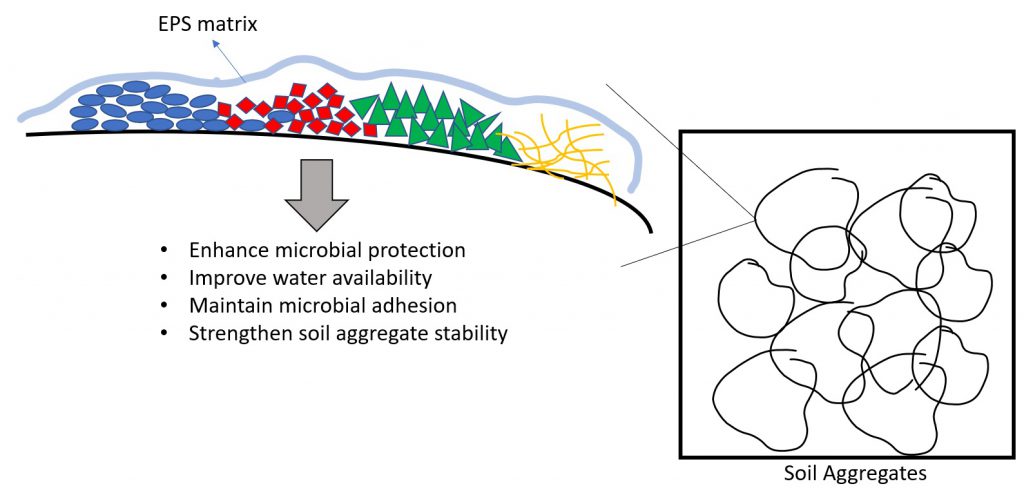Galactosamine can be used as an indicator for microbial extracellular polymeric substances (EPS), an important source of stable organic matter in agricultural soils

Four experiments form a consecutive program to elucidate the role of EPS (extracellular polymeric substances) in agricultural soils based on the following two central hypotheses: (1) EPS are an important component of microbial necromass derived from soils with cation exchange Resins (CE) extract. (2) GalN (galactosamine) is an indicator of microbial EPS in soils. In the first experiment, microbial EPS formation is investigated by cultivating soil bacteria and soil fungi. Glycerol and starch serve as the C source and the microorganisms are grown in the absence or presence of organic matter (OS) free sterile sand. In the second experiment, simple (glycerol or corn-derived starch) and complex (corn-derived cellulose or corn straw) 13C-labeled substrates are tested for their ability to produce bacterial and fungal EPS in four soils, which differ in the fungal/bacteria ratio based on the soil-pH value or because of the fertilization history. In the third experiment, glucose and cellulose degradation are measured to assess carbon use efficiency (CUE) and thermodynamic efficiency in two soils that differ in fungal/bacteria ratio due to fertilization history or due to the absence or presence of EPS differentiate. In the fourth experiment, microbial EPS formation is increased by the addition of a simple and readily available substrate (maize-derived starch), which promotes bacterial EPS formation and a more degradation-resistant substrate (corn-derived cellulose) which promotes fungal EPS formation. Persistence and aggregate-stabilizing effects of freshly formed EPS are then followed for 70 days. The C/N ratio of the substrates is generally adjusted to 40, in experiment 1 with (NH4)2SO4 and in experiments 2, 3 and 4 with (15NH4)2SO4. In all experiments, the EPS extracted with CER are analyzed for their amino sugar concentration combined with their component-specific δ13C and δ15N analysis. EPS extracts are additionally tested for 13C and δ15N in organic matter, total carbohydrates, total protein and total DNA. In soil, 13C are stored in organic matter and microbial biomass (MB), total 15N and MB15N as well as enzyme activity (N-acetyl-β-D-glucosaminidase and tyrosine peptidase) measured. Furthermore, amino sugars are determined, combined with their component-specific δ13C and δ15N analysis. The production of total CO2 and 13CO2 is measured in the soil atmosphere. In experiment 3, the heat production is also measured using microcalorimetry.
Link to English scientific abstract
Link to German scientific abstract